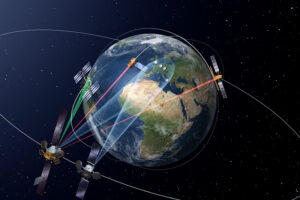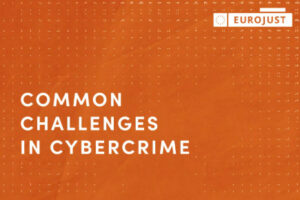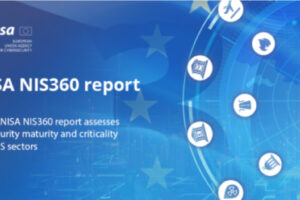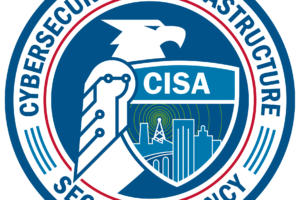Aviation, maritime and telecoms agencies raise alarm over increase in jamming and spoofing of satellite navigation systems


Organisation Types for membership



The International Telecommunication Union (ITU) and the European Space Agency (ESA) have announced a collaborative effort to improve mitigation measures against harmful interference in satellite systems.
The joint initiative, reflecting United Nations objectives under the 2030 Agenda for Sustainable Development, aims to ensure the sustainable and efficient use of limited space-based communication resources.
Both organisations recognise growing complexities in managing finite spectrum and orbital resources. An agreement signed in Barcelona, Spain, formalises their plans for closer cooperation on key issues for global digital communications.
Under the agreement, ITU and ESA will work together on:
Space-based communication technologies are increasingly crucial for global connectivity, scientific research, and emergency response systems. At the same time, growing numbers of satellites and increasing risks of signal interference necessitate innovative, increasingly complex, and highly coordinated spectrum management solutions.
“Innovation and regulations are key to facilitate and preserve access to spectrum-orbit resources free from harmful interference,” said Mario Maniewicz, Director of ITU Radiocommunications Bureau. “This agreement is the first step towards a series of joint ESA-ITU efforts to ensure sustainability of space radio-communications systems.”
Preserving radio waves for all
ITU, as the UN specialised agency for information and communication technologies, has long been at the forefront of coordination among countries and regions on radio frequencies and satellite orbits worldwide. ITU Resolution 189 (Rev. Bucharest, 2022) emphasises the importance of transparency and confidence-building in outer space activities.
ESA, an intergovernmental organisation established in 1975, supports space research and technology development for peaceful and scientific purposes. Together, ITU and ESA aim to strengthen international efforts in satellite monitoring and interference mitigation, ensuring reliable and sustainable access to satellite communication services worldwide.
“Promoting the responsible use of spectrum and preserving it from interferences is key to ensure the viability of our operators and ultimately the service delivered to their customers,” said Laurent Jaffart, ESA’s Director of Connectivity and Secure Communications. “Together with ITU, we will promote the importance of ensuring the sustainability of this limited and valuable resource and will collaborate towards establishing good practices for its responsible use for the benefit of society and businesses.”
A step towards a sustainable digital future
By combining their expertise and resources, ITU and ESA could set a precedent for enhanced cooperation in the field of satellite communications.
“The shared commitment to responsible spectrum management and technological innovation marks a significant step toward a sustainable digital future for everyone,” said Mr Maniewicz. “This initiative underscores the importance of international collaboration in addressing the challenges and opportunities presented by space technologies.”
Maniewicz and Jaffart signed for their respective organisations at the Mobile World Congress (MWC2025 Barcelona).
As the demand for satellite-based services continues to grow, partnerships like this will help maintain the integrity and accessibility of global communication networks.
ITU and ESA have reaffirmed their dedication to a future where space technologies contribute positively to societal progress and sustainable development.

The State of California adopted the 2024 International Wildland-Urban Interface Code® (IWUIC®) as the basis for Title 24, Part 7, 2025 California Wildland-Urban Interface Code to address escalating wildfire risks, enhance fire resilience with science-based standards, and set the benchmark for safer, more sustainable communities in fire-prone areas.
California’s adoption of the 2024 IWUIC is the result of a multi-year collaboration between the CAL FIRE Office of the State Fire Marshal, the California Fire Prevention Officers (CAL FPOs), California Building Officials (CALBO), the International Code Council (ICC), the California Building Industry Association (CBIA), and wildfire stakeholders culminating with rulemaking by the California Building Standards Commission (CBSC).
“Today marks a milestone that represents the hard work of many to update and modernize Wildland-Urban Interface building codes,” said California State Fire Marshal Daniel Berlant. “While these aren’t necessarily new requirements, it’s a reorganization of many sections into a singular code with the goal of making it easier for local officials to ensure that new homes and buildings built in wildfire-prone areas have an increased chance of surviving a wildfire.”
“With the help of expert volunteers, CAL FIRE’s Office of the State Fire Marshal has shifted the basis of Title-24’s Wildland Urban Interface standards to a nationally developed model code. The IWUIC is developed though the collaborative efforts of the foremost experts in the field of wildland construction safety from across our country. By utilizing this model code, California will benefit from the continual code development cycle that the Code Council uses to ensure that all its codes are the best in the world,” said Code Council Immediate Past President Stuart D. Tom, P.E., CBO, FIAE – Superintendent of Building and Fire, Pasadena, California.
“The adoption of the California Wildland-Urban Interface Code as Part 7 of Title 24 marks a significant milestone in protecting communities from the devastating impacts of wildfires. This accomplishment highlights the dedication and collaboration of the CAL FPOs and the California Office of the State Fire Marshal in adapting the IWUIC to address California’s unique challenges. Our members remain dedicated in their commitment to enhancing fire prevention, improving life safety measures and developing codes that safeguard our homes and neighborhoods,” said Tim Spears, Fire Marshal, CAL FPOs North Division President and Joe Morelli, Fire Marshal, CAL FPOs South Division President.
This decision comes after careful consideration and is a testament to the state’s commitment to upholding the highest standards in wildfire resiliency and mitigation.
“There has never been a more essential time for collaboration in the name of public safety, and the newly approved use of the Code Council’s IWUIC is a testament to this shared effort. California’s building, fire and code professionals came together to work in concert with the California State Fire Marshal to usher in a new era of fire-safe development standards and defensible space provisions that will enhance fire safety in the built environment. With the definitive actions of the Building Standards Commission, CALBO looks forward to enforcing the IWUIC and its model provisions into the future,” said Jeff Janes, President of California Building Officials.
“While CBIA was initially concerned with this effort, we are now pleased to strongly support the California State Fire Marshal’s plan to use the Code Council’s IWUIC as the basis for California’s new stand-alone Wildland-Urban Interface fire safety code. This new document will combine three fire safety measures (building standards, defensible space provisions and fire-safe development standards) and publish them all under one cover,” said Christopher E. Ochoa, Esq., CBIA Senior Counsel – Codes, Regulatory and Legislative Affairs.

The NIST National Cybersecurity Center of Excellence (NCCoE) along with the SEMI Semiconductor Manufacturing Cybersecurity Consortium has released Draft NIST Internal Report (NIST IR) 8546, Cybersecurity framework (CSF) 2.0 Semiconductor Manufacturing Community Profile for public comment.
This draft Profile provides a voluntary, risk-based approach for managing cybersecurity activities and reducing cyber risk to semiconductor manufacturing systems. The semiconductor manufacturing environment is a complex ecosystem of device makers, equipment OEMs, suppliers and solution providers. This Profile focuses on desired cybersecurity outcomes and can be used as a guideline to improve the current cybersecurity posture of the semiconductor manufacturing ecosystem.
“NIST, in collaboration with industry leaders and government agencies, has developed and is releasing a comprehensive Framework designed to safeguard semiconductor manufacturing from emerging threats and vulnerabilities,” said Sanjay Rekhi, group leader of the Security Components and Mechanisms Group at NIST. “This initiative is part of a broader, multi-year effort to strengthen the security of critical infrastructure, with a particular focus on the security of semiconductors and their supply chain.”





With the aim of improving and reinforcing the security of ports and their entry routes, Indra has launched the European SMAUG (Smart Maritime and Underwater Guardian) RDI project, as part of the European Union’s Horizon Europe program. The company heads the consortium of entities from seven European countries that will work together to improve the underwater detection of threats and illicit trafficking.
Over 80% of world trade is conducted by sea, and the continuous movement of vessels requires port security processes to be robust and effective, especially for monitoring and detecting legal and illegal activities at ports, in coastal areas and on borders. Geopolitical tensions are also turning the bottom of the oceans into sensitive terrain that needs to be protected.
Within this context, the SMAUG project seeks to detect, track and monitor potentially illegal and harmful movements and products entering EU ports and coasts by means of an integrated system based on Indra’s iSIM solution, which combines security management, advanced underwater detection systems and surveillance vessels.
More specifically, underwater threats are detected and located using four main methods. The first method is acoustic detection, in which a series of hydrophones listen for sounds emitted by small autonomous underwater vehicles. Secondly, a sonar performs a quick scan of the hull and the bottom of the harbor. The third method of underwater detection is high-resolution sonar inspection, which is used to inspect objects in water with poor visibility. Finally, collective autonomous location is employed, whereby a coordinated swarm of autonomous underwater vehicles act cooperatively.
These systems, supported by artificial intelligence, can more effectively detect unlawful and dangerous goods and/or threats hidden beneath the surface of the water. SMAUG will thus make a significant contribution to maritime security by improving the protection of infrastructures and vessels and the detection of vessels, including narco-submarines, suspected of conducting illegal or potentially dangerous activities.
As the leader of the SMAUG project, Indra brings its expertise in developing advanced algorithms for processing underwater sound and images, applying artificial intelligence for early detection of objects and threats. Additionally, it contributes its capabilities in the field of security for port infrastructure and maritime transport, providing solutions that enhance protection in complex maritime environments.
Its iSIM solution acts as a core for integration and analysis, unifying and processing data from physical security systems such as hydrophones, underwater scanners, drone swarms, and autonomous vehicles, along with satellite surveillance systems. It also takes information from port management systems, enabling a global and interoperable view that optimizes security, operational efficiency, and real-time decision-making.
International cooperation
Juan Román Martínez, the head of Indra’s SMAUG project, emphasized that ”this project means significant progress in maritime security, as it reinforces safety and promotes international cooperation in the fight against illicit activities in the maritime environment”.
With a budget of almost six million euros, the SMAUG RDI project involves a highly experienced consortium made up of 22 partners, including universities, research centers, SMEs, law enforcement agencies, public authorities, coast and border guards and private organizations from seven EU countries (Estonia, France, Germany, Greece, Italy, Norway and Spain).
Among its capabilities, SMAUG is being prepared to achieve interoperability with the Common Information Sharing Environment (CISE), in order to help create a political, cultural, legal and technical environment that allows exchanges of information between the surveillance systems of the member States of the European Union (EU) and the European Economic Area (EEA). Thus, all of the authorities from the different sectors involved in port and maritime settings could have access to any additional classified and unclassified information required to perform missions at sea.
Indra will continue to drive a more secure, connected and sustainable future with this project, placing technology at the service of the safety and well-being of citizens in keeping with its motto:'Tech for Trust'. With innovation at the core of its business and unique experience going back over 30 years, the company boasts a comprehensive portfolio of pioneering solutions designed on an ad hoc basis to address all kinds of citizen security threats that have been implemented in countries all around the world.